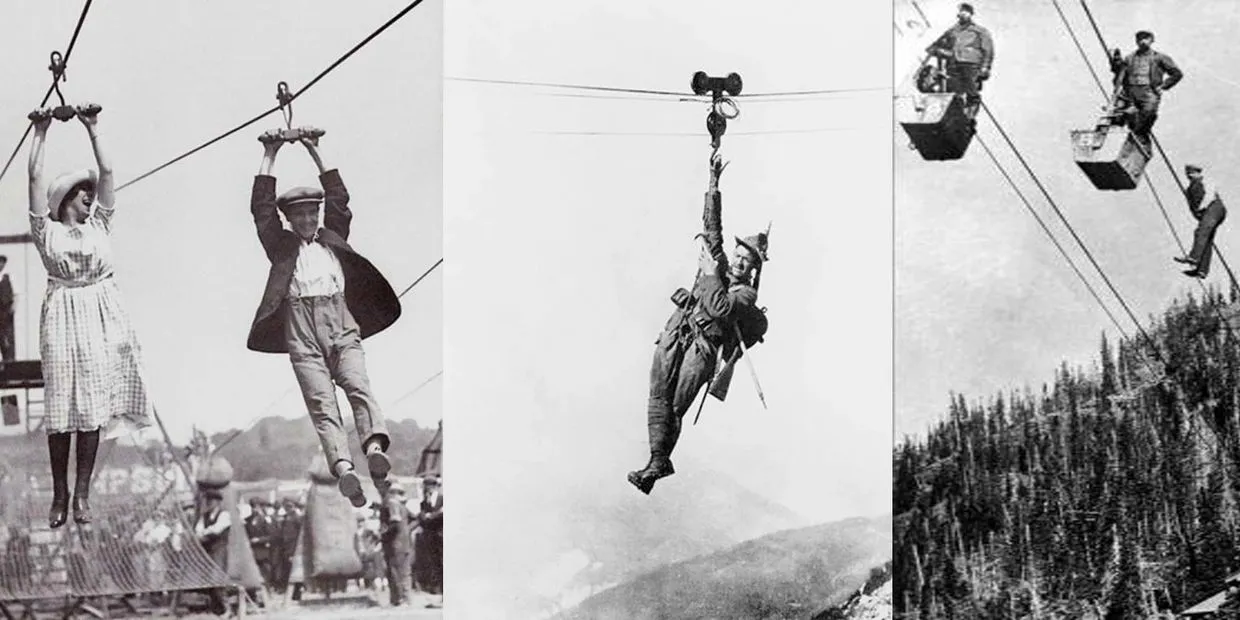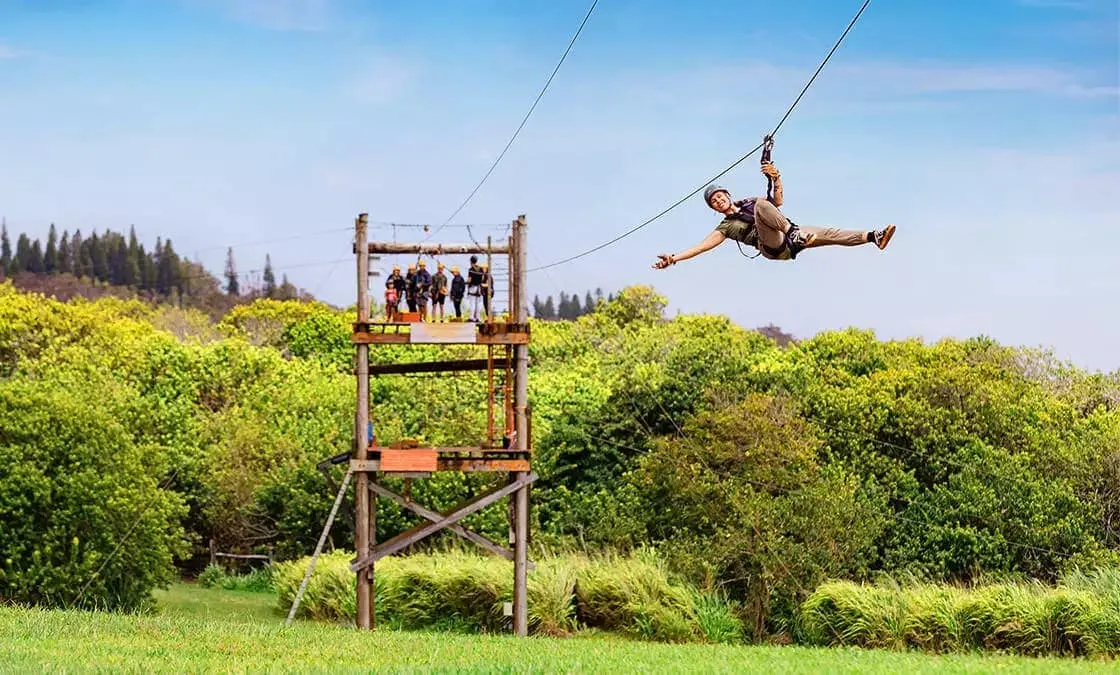Table of Contents
For many adventure seekers, nothing quite compares to the rush of gliding high above treetops, rivers, and mountains on a zipline. The activity, once primarily used as a means of transport in remote regions, has now become a worldwide attraction for those craving adrenaline, scenic beauty, and unique outdoor experiences. Today, ziplines are no longer just about speed and height—they’re about immersing yourself in nature, conquering fears, and creating lasting memories.
A Brief History of the Zipline
Though ziplining may seem like a modern adventure activity, its origins go back centuries. Villagers in remote areas of the Himalayas, China, and South America used early versions of ziplines as a practical way to transport goods, supplies, and even people across rivers and valleys where bridges were unavailable.
In Costa Rica during the 1970s, biologists popularized the concept of ziplines as a way to study rainforests without disturbing the fragile ecosystem. It wasn’t long before tourism companies recognized the thrill and beauty of this experience, transforming ziplining into the recreational activity we know today.

The Appeal of Ziplines
1. Adrenaline and Adventure
The core attraction of a zipline is simple: the exhilarating sensation of soaring through the air. Riders are strapped into a secure harness, clipped to a sturdy cable, and propelled by gravity as they glide from one platform to another. The speed, height, and exposure to open air create an adrenaline rush unlike any other.
2. Scenic Exploration
Ziplines are often located in some of the most beautiful natural landscapes around the world. From tropical rainforests and mountain ridges to coastal cliffs and canyons, zipline tours allow riders to experience scenery from a bird’s-eye perspective. What might take hours to hike can be appreciated in moments while flying through the sky.
3. Accessibility for All Ages
Unlike many extreme sports, a zipline does not require years of training or advanced fitness levels. Most tours are accessible to beginners, and professional guides provide safety briefings to ensure comfort and confidence. This makes ziplines a family-friendly adventure that appeals to kids, adults, and even seniors looking to step outside their comfort zones.
4. Team Building and Confidence Boosting
Corporate groups and schools often book zipline excursions as team-building activities. Facing a challenge together encourages trust, cooperation, and bonding. On a personal level, completing a ride helps individuals build confidence and overcome fears, particularly if they are afraid of heights.
Safety First: How Ziplines Are Designed
One of the most common questions people ask before riding a zipline is whether it’s safe. The good news is that modern ziplines are built with strict safety standards and equipment designed to handle high tension and weight loads. Harnesses, helmets, and dual-line systems are common features. Operators are trained to inspect cables and platforms regularly, ensuring every ride meets professional safety requirements.
Before each ride, participants typically receive a briefing on proper techniques—how to hold the straps, where to keep their hands, and how to brake if necessary. Safety is always the top priority, allowing riders to focus on enjoying the adventure.
Types of Ziplines
Not all ziplines are the same, and the variations add to the excitement:
- Canopy Ziplines: Found in rainforests or wooded areas, these ziplines weave through trees, offering close-up views of wildlife and vegetation.
- Mountain Ziplines: Built across valleys or along ridges, these offer stunning panoramic views and thrilling vertical drops.
- Water-Crossing Ziplines: Some of the most spectacular rides cross rivers, lakes, or even beaches, combining the thrill of flight with the beauty of water landscapes.
- Urban Ziplines: A newer concept, these installations in cities allow riders to experience a bird’s-eye view of urban skylines.
Famous Zipline Destinations
- Hawaii: The islands feature some of the most scenic ziplines, from volcanic slopes to tropical valleys.
- Costa Rica: Known as the birthplace of recreational ziplining, Costa Rica remains one of the world’s top destinations, with tours through lush rainforests and over waterfalls.
- Whistler, Canada: Home to one of the longest ziplines in North America, where riders soar over forests and rivers.
- Dubai, UAE: Known for pushing boundaries, Dubai offers an urban zipline experience across skyscrapers and cityscapes.
Tips for First-Time Zipliners
If you’re planning your first zipline adventure, here are a few tips to make the most of it:
- Wear comfortable clothing – Opt for activewear that allows free movement. Avoid skirts, dresses, or loose accessories.
- Closed-toe shoes are a must – Sneakers or hiking shoes are best for climbing platforms and landing safely.
- Listen to your guide – Pay attention during the safety briefing and follow instructions closely.
- Bring a sense of adventure – Nerves are normal, but once you take off, you’ll likely find the experience exhilarating and unforgettable.
Why Ziplining is More Than Just a Ride
At its heart, ziplining is about more than the thrill of speed. It’s a way to connect with nature, to conquer personal challenges, and to share a unique experience with friends and family. The blend of excitement, safety, and accessibility has made ziplines one of the fastest-growing outdoor adventure activities worldwide.
Whether you’re gliding over a rainforest in Costa Rica, soaring above valleys in Hawaii, or trying an urban zipline in the city, the experience will leave you with a new perspective—both literally and figuratively.
Helpful Links on Ziplines
- Northshore Zipline - Maui, Hawaii
- Selvatura Adventure Park – Costa Rica
- Ziptrek Ecotours – Whistler, Canada
- XLine Dubai Marina – UAE
Frequently Asked Questions
1. What exactly is ziplining, and why do people love it so much?
Ziplining is an adventure activity where you glide through the air on a secure cable, usually while harnessed in. People love it because it combines adrenaline, incredible scenery, and the thrill of flying. It’s one of the few outdoor adventures that allows beginners to instantly experience the sensation of soaring over treetops, valleys, rivers, and mountains.
2. Where did ziplining come from originally?
Ziplining actually has ancient roots. Early versions were used in places like the Himalayas, China, and South America as a practical way to transport goods or people across rivers and deep valleys. In the 1970s, biologists in Costa Rica began using ziplines to study rainforests from above. That idea evolved into the recreational zipline tours we know today.
3. Why is ziplining such a popular adventure activity now?
People are drawn to ziplining because it offers:
- Adrenaline & excitement
- Scenic exploration from a bird’s-eye view
- Accessibility for all ages
- Confidence-building and overcoming fears
Ziplining creates unforgettable memories, whether you're a first-time rider or an adventure enthusiast.
4. Do I need to be super fit or experienced to ride a zipline?
No! Most ziplines are designed for beginners and families, and guides provide all safety instructions you need. As long as you meet the weight requirements and can climb a few stairs or platforms, you can enjoy the experience. Kids, adults, and even seniors can participate safely.
5. Is ziplining safe? How do operators ensure rider safety?
Ziplining is very safe when operated correctly. Modern ziplines follow strict engineering and safety standards. Safety measures typically include:
- Professional harnesses
- Dual-line or backup systems
- Helmets
- Regular equipment inspections
- Detailed safety briefings
Guides also teach you hand placement, braking (if required), and landing techniques. Safety is always the top priority so you can relax and enjoy the ride.
6. What types of ziplines are there around the world?
There are several kinds of zipline experiences, each offering its own thrill:
- Canopy ziplines: Glide through rainforests or tree canopies.
- Mountain ziplines: Soar across valleys and ridges with huge panoramic views.
- Water-crossing ziplines: Travel over rivers, lakes, and even beaches.
- Urban ziplines: Ride between skyscrapers or above city skylines.
These variations mean ziplining can be peaceful, scenic, fast, extreme, or a mix of all four.
7. What are some of the most famous zipline destinations in the world?
Top zipline hotspots include:
- Hawaii – Known for thrilling rides above volcanic slopes and lush valleys.
- Costa Rica – The birthplace of eco-tourism ziplining through rainforests.
- Whistler, Canada – Home to some of the longest and fastest ziplines in North America.
- Dubai – Offers cutting-edge urban ziplines across skyscrapers and cityscapes.
Each destination offers its own style of adventure.
8. What should I wear when ziplining for the first time?
Wear clothes you can move in—activewear is best. Avoid skirts, dresses, or loose accessories that can get tangled. Closed-toe shoes (like sneakers or hiking shoes) are essential for safe takeoffs and landings. Tie back long hair and leave dangling jewelry at home.
9. What should I expect during the safety briefing before a zipline tour?
Guides will walk you through:
- How to clip in
- How to hold your harness or straps
- Where to keep your hands
- How to brake (if the line uses a braking system)
- How to land safely
The briefing is simple, clear, and designed to make you feel confident before your first flight.
10. Is ziplining a good activity for families or group outings?
Definitely. Ziplining is one of the best family-friendly adventures because it blends teamwork, encouragement, and shared excitement. Many corporate groups and school programs use ziplining as a team-building activity because it promotes trust and confidence.
11. How scary is ziplining if I’m afraid of heights?
It’s normal to feel nervous at first, but most people find that once they take off, the fear fades into excitement. Ziplining can actually help people overcome height-related fears because you're securely harnessed and supported the entire time. Guides are trained to help you feel safe and comfortable.
12. Why do people say ziplining is more than just a ride?
Ziplining offers a deeper experience beyond the thrill:
- It connects you to nature in a unique way.
- It helps you build confidence by stepping outside your comfort zone.
- It creates memories shared with friends and family.
- It gives you vantage points you can’t reach by hiking or driving.
Many riders leave feeling empowered, refreshed, and inspired.
13. What tips should first-time zipliners know before going?
Here’s what helps most beginners:
- Wear comfortable clothes and closed-toe shoes.
- Listen closely to your guide’s instructions.
- Bring water and stay hydrated.
- Start with an open mind—nerves are normal!
Once you take off, you’ll likely find ziplining to be one of the most exciting and rewarding outdoor adventures you’ve tried.
If you would like to read and learn more about interesting things in Hawaii! Check out our blog page here on our website!
or
